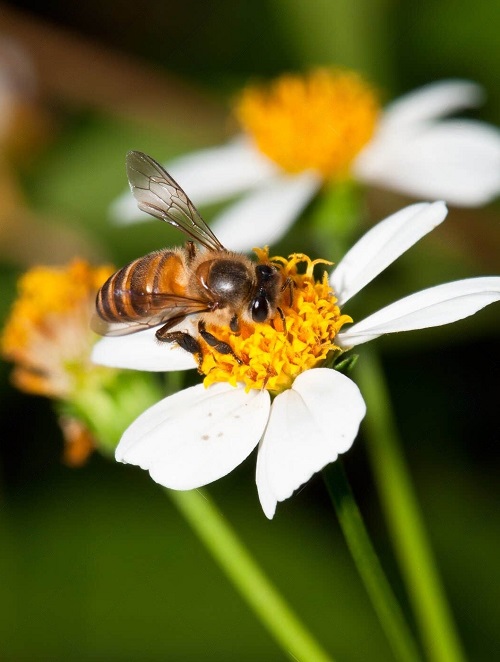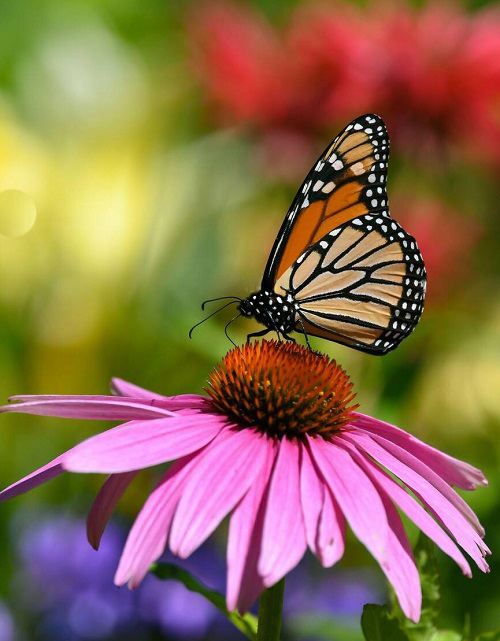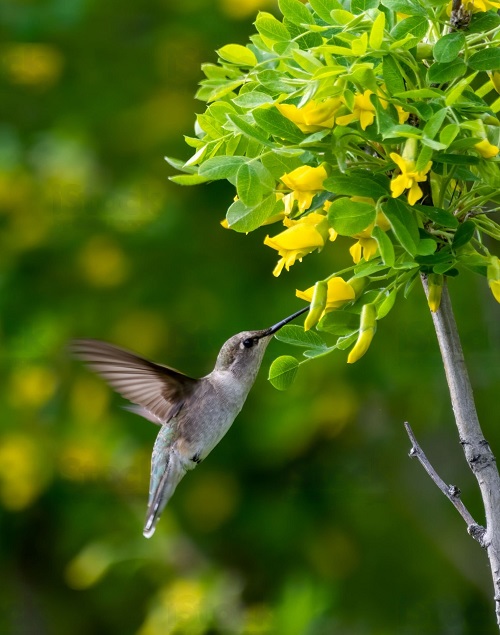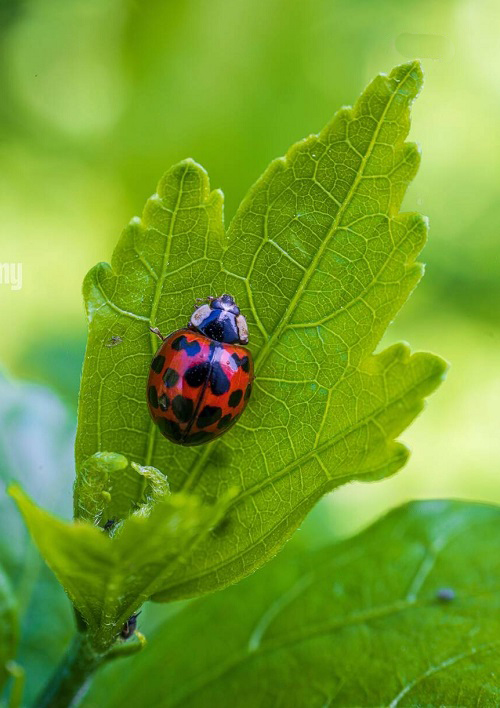Want to know the secret to increasing plant productivity? Invite these Pollinators to Have the Most Productive Garden!
Invite these Pollinators to Have the Most Productive Garden and maximize your garden’s yield. Discover how attracting these valuable creatures can enhance your gardening experience and ensure bountiful harvests for years to come.
Here are the Best Flowers for Attracting Pollinators to a Vegetable Garden
Invite these Pollinators to Have the Most Productive Garden
1. Honeybees
Honeybees are highly efficient and renowned pollinators that play a crucial role in boosting garden productivity. Their ability to collect pollen from multiple flowers in a single flight significantly increases the chances of successful pollination.
How to Attract Honeybees to the Garden
- Plant a diverse selection of nectar-rich flowers, including lavender, sunflowers, borage, and wildflowers.
- Choose plants that bloom at different times throughout the growing season to provide a continuous food source for honeybees.
- Provide a water source, such as a shallow dish or birdbath with rocks or floating objects for honeybees to access water safely.
Learn about attracting bees to the garden here
Plants Pollinated by Honeybees
- Garden Vegetables: Crops like tomatoes, peppers, zucchini, cucumbers, melons, and squashes rely on honeybees to transfer pollen between their flowers.
- Flowering Plants: Plants such as sunflowers, lavender, cosmos, marigolds, and many others greatly benefit from honeybee visits.
2. Butterflies
Butterflies, with their graceful beauty, not only enchant us but also serve as important pollinators in the garden. As they flutter from flower to flower in search of nectar, butterflies inadvertently transfer pollen, playing a crucial role in plant reproduction.
Their frequent visits to various blooms help ensure effective pollination, leading to increased fruit set and seed production.
How to Attract Butterflies to the Garden
To attract butterflies to your garden and create a welcoming habitat for them, consider the following tips:
- Plant a Variety of Nectar-Rich Flowers: Butterflies are attracted to bright, colorful flowers that provide ample nectar. Examples of butterfly-friendly flowers include milkweed, coneflowers, zinnias, asters, and lantanas.
- Choose Native Plants: Native plants are well-suited to the local ecosystem and often have co-evolved with native butterflies. Research the native plants in your region that attract butterflies and integrate them into your garden design.
Here are Beautiful Flowers that Attract Butterflies
3. Hummingbirds
Hummingbirds are captivating pollinators that can significantly boost garden productivity. With their long beaks and rapid wingbeats, they have a unique ability to access nectar deep within flowers.
As they feed on nectar, hummingbirds unintentionally transfer pollen from one flower to another, facilitating cross-pollination. This vital process leads to increased fruit set and seed production in plants, ultimately enhancing garden productivity.
How to Attract Hummingbirds to the Garden
You can easily invite hummingbirds to the garden by planting the flowers that hummingbirds love.
- Bee Balm: Bee Balm’s vibrant tubular flowers in shades of red, pink, or purple produce copious amounts of nectar, making them irresistible to hummingbirds.
- Cardinal Flower: The striking red flowers of the Cardinal Flower serve as a beacon for hummingbirds with their long, tubular shape and abundant nectar.
- Zinnia: Zinnias, with their colorful blooms, especially in shades of red, orange, and pink, are like a hummingbird buffet, attracting these tiny birds with their abundant nectar.
- Salvia: The tall spikes of Salvia flowers in hues of purple, red, or blue are a hummingbird favorite, providing a steady supply of nectar throughout the blooming season.
- Bleeding Hearts: The unique heart-shaped flowers of Bleeding Hearts dangle delicately, enticing hummingbirds with their sugary nectar and adding an enchanting touch to the garden.
Note: There are many more plants that attract hummingbirds. And all these beautiful plant and flower species are pollinated by hummingbirds, turning your garden into a productive wonder.
Here are Flowers That Attract Hummingbirds
4. Beetles
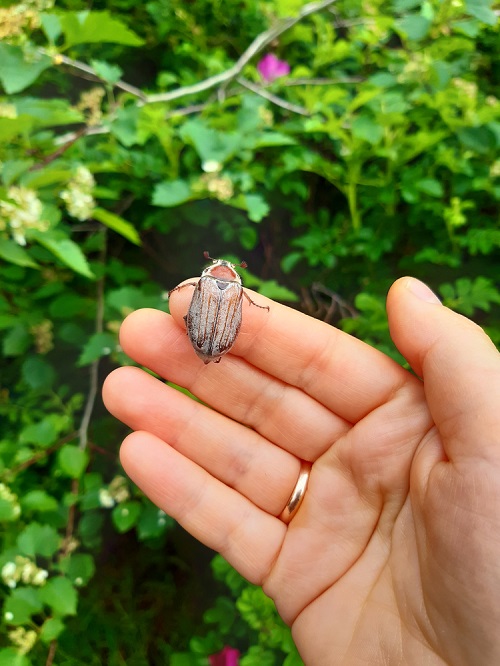
Beetles, often underappreciated as pollinators, play a vital role in boosting garden productivity. They are particularly effective pollinators for plants with large, bowl-shaped flowers, often in shades of white or green.
Some examples of flowers and vegetables that beetles pollinate include magnolias, hellebores, corn, squash, cucumbers, and melons.
How to Attract Beetles to the Garden
- Provide Shelter: Incorporate diverse vegetation, such as native plants, shrubs, and ground covers. These offer shelter, hiding spots, and overwintering sites for beetles.
- Maintain Mulch and Leaf Litter: Beetles appreciate organic matter, so leave a layer of mulch and allow leaf litter to accumulate in certain areas of your garden.
- Plant Beetle-Friendly Flowers: Certain flowers have a natural appeal to beetles, attracting them with their vibrant colors and enticing fragrances. Consider including Daisies, Sunflowers, and Coneflowers in your garden.
Note: Beetles come in various shapes, sizes, and colors. While some beetles, like Japanese beetles, can be problematic and cause damage to certain plants, many beetles are actually beneficial and also feed on pests like aphids, caterpillars, and slugs.
5. Moths

When we think of pollinators, bees, and butterflies often come to mind. However, there is another group of unsung heroes in the pollination process – moths.
While they may be less conspicuous due to their nocturnal habits, moths are efficient pollinators with specific adaptations that enable them to fulfill this crucial role. Unlike bees that rely primarily on sight, moths navigate through the night using their keen sense of smell to locate flowers and detect nectar.
How to Attract Moths to the Garden
To attract moths, consider planting night-blooming flowers with strong scents. Create a moth-friendly habitat by incorporating native plants and providing a water source. Avoid using pesticides, as they can harm not only moths but other beneficial insects as well.
Plants Pollinated by Moths
- Night-Blooming Jasmine (Cestrum nocturnum): This highly fragrant shrub, with its small white flowers that open at night, relies on moth pollinators for fertilization.
- Evening Primrose (Oenothera): These showy, yellow, or white flowers bloom in the evening and are primarily pollinated by night-flying moths.
- Moonflower (Ipomoea alba): Moonflowers are large, white, trumpet-shaped flowers that unfurl at dusk. Moths are particularly drawn to their intoxicating fragrance and act as essential pollinators for these beautiful plants.
Here are Cute Moths that are as Beautiful as Butterflies
6. Hover Flies
Also among the best pollinators are the Syrphid flies, often overlooked due to their small size and resemblance to bees.
Syrphid flies are exceptional pollinators, playing a crucial role in the reproduction of various plant species. Their small size and hairy bodies allow them to efficiently transport pollen over short distances, aiding in the fertilization process.
How to Attract Syrphid Flies to the Garden
- Syrphid flies are attracted to a variety of flowering plants. Create a garden that offers a selection of flowers with different colors, shapes, and bloom times.
- These flies are sensitive to pesticides, so minimize or eliminate the use of harmful chemicals in your garden.
Note: Pesticides can disrupt their natural behavior and reduce their presence. Instead, opt for organic and natural pest control methods to maintain a healthy balance in your garden ecosystem.
Here are the Best Organic Pest Control Approaches Every Gardener Should Know
Plants Pollinated by Syrphid Flies
- Sunflowers (Helianthus): Syrphid flies are particularly fond of sunflowers, making frequent visits to collect nectar and pollen.
- Marigolds (Tagetes): These vibrant and cheerful flowers are among the favorites of Syrphid flies. By visiting marigolds, these flies aid in the transfer of pollen, leading to the formation of healthy seeds.
- Daisies (Asteraceae): Syrphid flies are often spotted hovering around daisies, participating in the essential process of pollination for these popular garden flowers.
- Herbs: Syrphid flies also lend a helping hand in pollinating various herbs such as Parsley (Petroselinum crispum), Thyme (Thymus), and Mint (Mentha).
7. Wasps
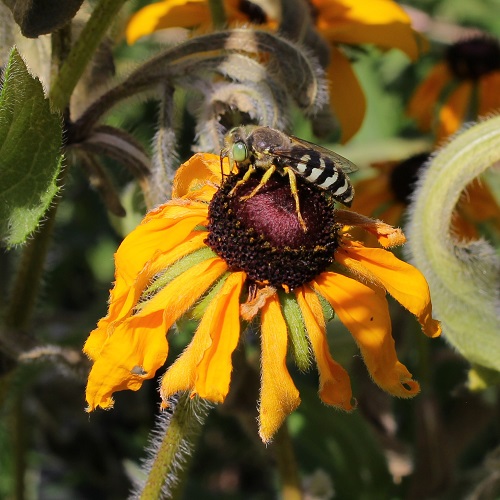
Wasps are often seen as pesky insects that elicit fear and discomfort, but did you know that they can play a crucial role as beneficial pollinators in your garden?
Certain species within the Vespidae and Sphecidae families are important pollinators due to their foraging behavior and body structure. As they search for food sources, wasps inadvertently collect and transfer pollen from flower to flower.
How to Attract Wasps to the Garden
- Consider incorporating species such as Goldenrod (Solidago), Asters (Aster), and Sedums (Sedum) into your garden. These plants not only provide nectar as a food source but also offer shelter and nesting sites.
- Providing a water source, such as a shallow dish with stones for them to perch on, can also help attract wasps.
Plants Pollinated by Wasps
- Figs (Ficus): Fig wasps (Agaonidae) are essential for fig pollination. Female wasps enter the fig’s unique flower structure to lay eggs and inadvertently transfer pollen, enabling the fig to develop.
- Orchids (Orchidaceae): The intricate and fascinating relationship between orchids and wasps involves the wasps’ mating behaviors and their attraction to the orchids’ unique scents and shapes.
- Umbelliferous Plants (Apiaceae): Wasps are known to visit and pollinate plants such as fennel, dill, and parsley. These plants produce umbrella-shaped flower clusters, making them easily accessible to wasps seeking nectar.
8. Mason Bees
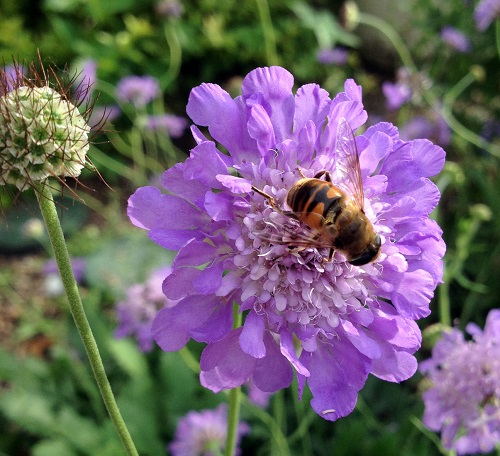
Mason bees, also known as Orchard bees or Blueberry bees, are highly efficient pollinators that can greatly benefit your garden. Their gentle nature, combined with their exceptional pollination abilities, make them an excellent addition to any garden ecosystem.
As solitary bees, they do not produce honey but focus solely on pollinating flowers. They are incredibly efficient, with just a few Mason bees capable of pollinating an entire garden or orchard.
How to Attract Mason Bees to the Garden
- Provide Mud Sources: Mason bees use mud to build their nests. By creating a mud source, such as a shallow tray or moist soil patch, you can facilitate their nest-building process and encourage their presence.
- Provide Nesting Sites: Mason bees require suitable nesting sites to establish their populations. You can offer nesting opportunities by providing bee houses or drilling holes in wooden blocks or logs.
Plants Pollinated by Mason Bees
- Fruit Trees: Mason bees play a vital role in the pollination of fruit trees, such as apples, pears, cherries, plums, and peaches.
- Berry Bushes: Blueberries, raspberries, blackberries, and other berry-producing bushes rely on Mason bees for optimal pollination.
- Native Wildflowers: Mason bees are excellent pollinators for a wide range of native wildflowers, fostering biodiversity and supporting the natural habitat.
- Garden Vegetables: Mason bees also contribute to the pollination of various garden vegetables, including zucchini, cucumbers, melons, and squashes.
9. Ladybugs
Ladybugs, those charming little insects with vibrant red or orange bodies adorned with black spots, are not just a delightful sight in the garden. While they are commonly known for their voracious appetite for garden pests, ladybugs also play a significant role in the pollination of various plants, flowers, and vegetables.
How to Attract Ladybugs to the Garden
- Plant a variety of flowers that are attractive to ladybugs, such as daisies, sunflowers, yarrow, cosmos, and marigolds.
- Minimize the use of pesticides in your garden, as these chemicals can harm ladybugs and other beneficial insects.
Here is How to Attract Ladybugs to Your Garden
Plants Pollinated by Ladybugs
Apart from flowers, Ladybugs are extremely fond of Herbs such as:
- Dill (Anethum graveolens): Ladybugs are attracted to the delicate, feathery foliage and the small, yellowish flowers of dill.
- Cilantro (Coriandrum sativum): The enticing aroma and delicate leaves of cilantro make it a favorite among both humans and ladybugs.
- Fennel (Foeniculum vulgare): Ladybugs find these flowers particularly enticing, as they provide a rich source of nectar and pollen.
- Parsley (Petroselinum crispum): Ladybugs are frequently spotted on parsley plants, often perching on the tiny, greenish-yellow flowers that appear in clusters.
Here are the Plants that Attract Ladybugs
10. Solitary Bees

Solitary bees, as the name suggests, do not form large colonies like honeybees. Instead, they lead independent lives, nesting in various natural or human-made cavities.
They show a particular affinity for native flowering plants, making them crucial for the health of local ecosystems. Additionally, they play a significant role in pollinating certain crops and vegetables.
How to Attract Solitary Bees to the Garden
- Provide Nesting Sites: Solitary bees need suitable nesting sites to lay their eggs. You can create nesting opportunities by leaving bare patches of soil, providing hollow plant stems or reed bundles.
- Seasonal Blooms: Plan your garden to have a succession of blooming flowers throughout the growing season. This ensures a continuous supply of nectar and pollen for solitary bees and encourages them to stick around.
Plants Pollinated by Solitary Bees
- Tomato: These bees buzz around the tomato flowers, facilitating the transfer of pollen and promoting better fruit formation. Additionally, their visits to different tomato plants aid in cross-pollination, which can improve the overall health and genetic diversity of the crop.
- Squash: Peponapis and Xenoglossa species of Solitary Bees, also known as Squash Bees, specialize in pollinating plants from the Cucurbita family, which include summer squash, winter squash, and pumpkins.
- Cucumber: Cucumbers, like squash, belong to the Cucurbitaceae family, and solitary bees also play a vital role in their pollination.

